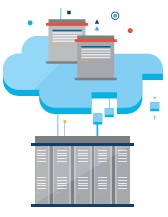What is cloud?
Computing as a service over the Internet
Cloud computing, often referred to as simply “the cloud,” is the delivery of on-demand computing resources—everything from applications to data centres—over the Internet on a pay-for-use basis.
Elastic resources
Scale up or down quickly and easily to meet demand
Pay for use
Metered service so you only pay for what you use
Self Service
All the IT resources you need with self-service access

Cloud computing services

Software
as a service (SaaS)
Cloud-based applications—or software as a service (SaaS)—run on distant computers “in the cloud” that are owned and operated by others and that connect to users’ computers via the Internet and, usually, a web browser.

Platform
as a service (PaaS)
Platform as a service provides a cloud-based environment with everything required to support the complete lifecycle of building and delivering web-based (cloud) applications—without the cost and complexity of buying and managing the underlying hardware, software, provisioning and hosting.

Infrastructure
as a service (IaaS)
Infrastructure as a service provides companies with computing resources including servers, networking, storage, and data centre space on a pay-per-use basis.
Cloud computing deployment models

Public cloud
Public clouds are owned and operated by companies that use them to offer rapid access to affordable computing resources to other organisations or individuals. With public cloud services, users don’t need to purchase hardware, software or supporting infrastructure, which is owned and managed by providers.

Private cloud
A private cloud is owned and operated by a single company that controls the way virtualised resources and automated services are customised and used by various lines of business and constituent groups. Private clouds exist to take advantage of many of cloud’s efficiencies, while providing more control of resources and steering clear of multi-tenancy.

Hybrid cloud
A hybrid cloud uses a private cloud foundation combined with the strategic use of public cloud services. The reality is a private cloud can’t exist in isolation from the rest of a company’s IT resources and the public cloud. Most companies with private clouds will evolve to manage workloads across data centres, private clouds and public clouds—thereby creating hybrid clouds.

